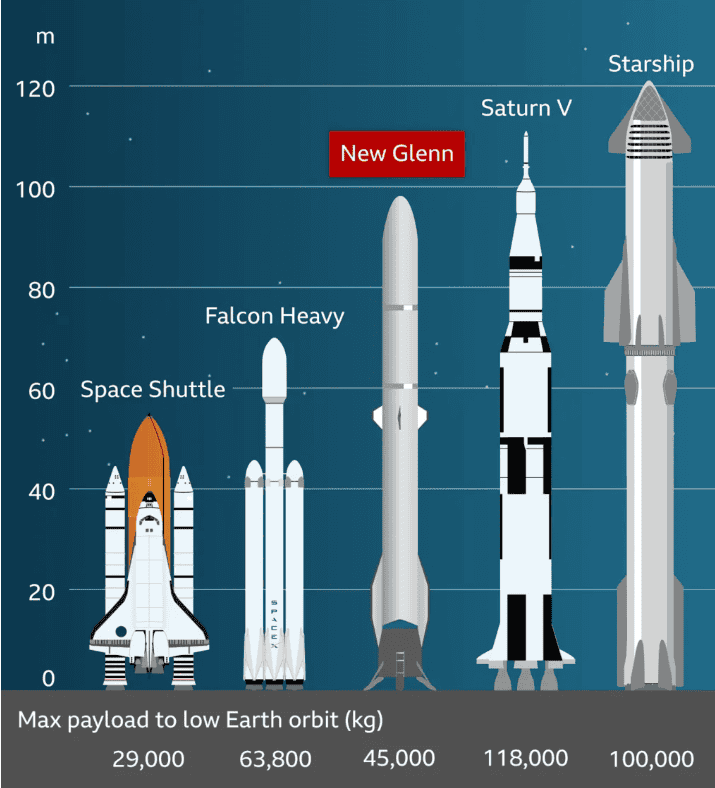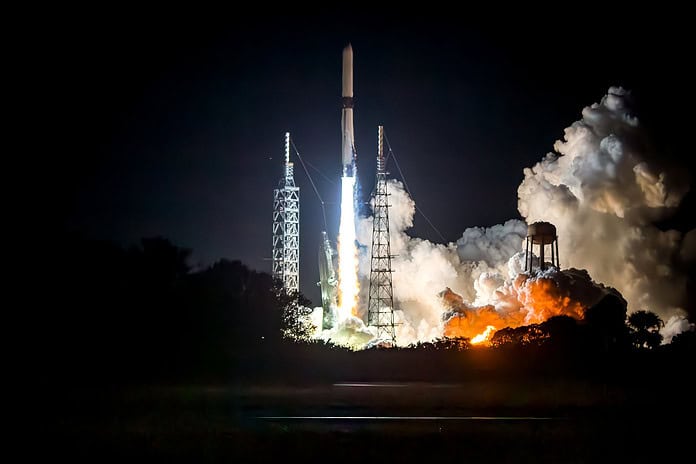Following a launch scrub caused by an icy valve and then another caused by weather, the third time was the charm. Blue Origin, the aerospace company founded by Amazon billionaire Jeff Bezos, successfully launched its New Glenn rocket into orbit for the first time early on January 16th. The first launch of New Glenn, which occurred at 2:03 a.m. EST from Cape Canaveral Space Force Station, cemented a major achievement for the private spaceflight company. Blue Origin has spent over a decade developing the private heavy-lift vehicle.
New Glenn is Blue Origin’s answer to compete with SpaceX and United Launch Alliance in the commercial space launch sector. The New Glenn is designed to not only carry heavier payloads than SpaceX’s Falcon 9 but to play a key role in deploying Blue Origin’s Project Kuiper satellite constellation. Kuiper will be a satellite internet service run by Amazon, which will compete directly with SpaceX’s Starlink program.
Last week’s launch was also a certification flight for the massive rocket, as Blue Origin is seeking to obtain U.S. Space Force launch contracts under the Space Force’s National Security Space Launch program. While the rocket was successful in reaching orbit on its first attempt, additional flights will be required before it is fully certified.
“This is a new era for Blue Origin and for commercial space,” said Jarrett Jones, senior vice president for New Glenn, in a post-launch statement. The rocket’s payload, the Blue Ring Pathfinder, achieved its objectives during the six-hour mission, including successful power and communications tests.

Landing Balked
While achieving orbit was the mission’s primary goal, Blue Origin had set an ambitious secondary target: landing the rocket’s first-stage booster on the company’s landing ship, Jacklyn, far out in the Atlantic Ocean. The booster, whimsically named So You’re Telling Me There’s a Chance, reignited three of its seven BE-4 engines for a reentry burn, but telemetry froze approximately eight minutes into the flight. Blue Origin later confirmed the booster was lost.
Landing and reusing boosters are critical to reducing costs in the commercial space industry, a feat pioneered by SpaceX’s Falcon 9 rockets. Blue Origin CEO Dave Limp acknowledged the landing was a “stretch goal,” emphasizing the importance of learning from the attempt.
“It’s very hard to simulate the hypersonic environment as the booster comes back,” Limp said in a prior interview. “This was always going to be a test, and we’ll take what we learned into our next launch.”
The Federal Aviation Administration (FAA) is requiring Blue Origin to conduct a mishap investigation to determine the cause of the booster’s landing failure. The federal investigation could delay Blue Origin’s development efforts, but Blue Origin is hopeful that its launch plans remain on track. The company has already submitted initial findings as to the cause of the booster landing malfunction and plans to fly New Glenn again this spring.
Blue Origin’s path to reusability remains a priority. The company has successfully landed its smaller New Shepard rocket on multiple occasions during suborbital missions but has yet to achieve the same milestone for orbital-class rockets. The experience gained from this mission will inform future landing attempts and the company’s push for reusability.
Industry Reactions
Despite the missed landing, the space community praised Blue Origin’s successful orbital debut. Elon Musk, founder of SpaceX, congratulated Bezos and the Blue Origin team on X (formerly Twitter), saying, “Congratulations on reaching orbit on the first attempt!” Chris Kemp, CEO of Astra, added, “25 years of persistence paid off tonight.”
However, some critics pointed to the company’s high transfer orbit as a potential concern for orbital debris mitigation. While the orbit avoids heavily populated regions, any breakup could generate debris affecting key areas in low and medium Earth orbits.

About New Glenn
Named after astronaut John Glenn, the New Glenn rocket is Blue Origin’s first orbital-class vehicle and represents a substantial leap forward for the company. Standing slightly over 320 feet tall, the rocket’s first stage is powered by seven BE-4 engines fueled by liquefied natural gas (LNG). LNG, combined with Liquid Oxygen (LOX), is a relatively new fuel for rocket propulsion. The combination burns cleaner and provides more thrust than previously used propellants, such as solid rocket boosters used in the shuttle era, and kerosene/LOX mixtures used in Apollo.
On liftoff, New Glenn’s engines deliver 3.9 million pounds of thrust. The relatively low thrust-to-weight ratio of the New Glenn makes the rocket appear to rise much more slowly off of the pad than most other rockets today.
Blue Origin plans to conduct additional launches this year, including NASA’s ESCAPADE mission to Mars. Bezos has stated that the company is already working on two more New Glenn boosters and several upper stages at its manufacturing facility near the Kennedy Space Center.
A New Era in Space Competition
With this launch, Blue Origin joins a select group of companies capable of orbital spaceflight. The debut of New Glenn underscores the intensifying competition between private space firms, particularly between Blue Origin and SpaceX, whose heavy-lift Starship rocket is also advancing toward operational capability.
Industry experts view the rivalry as a driver for innovation. “What you’re going to see are these two companies challenge each other to make even greater strides,” said Dr. Simeon Barber of the Open University in the UK.
Blue Origin’s success with New Glenn not only positions it as a viable player in the space economy but also contributes to broader advancements in commercial space exploration. As the company prepares for its next launch, the lessons learned from this mission will shape its trajectory in the years ahead.


